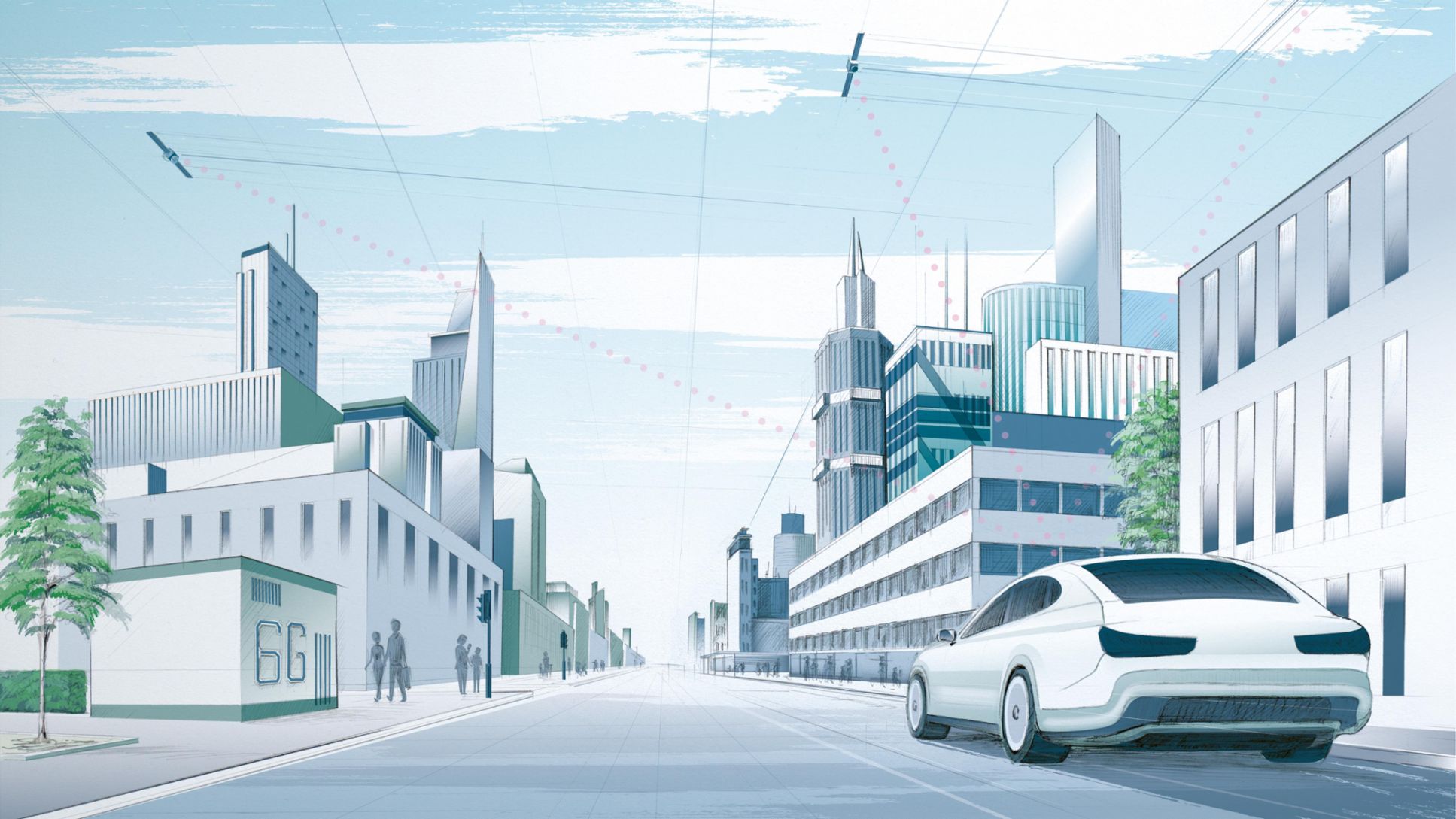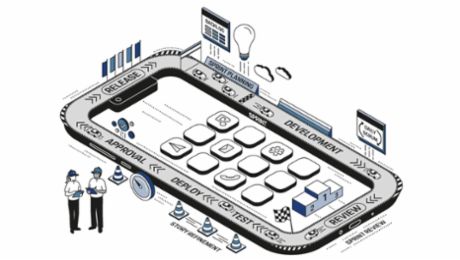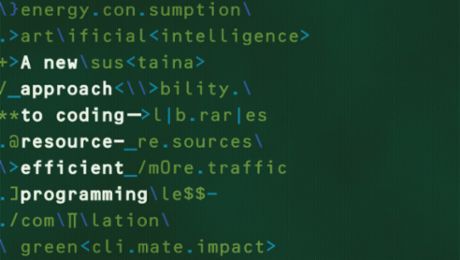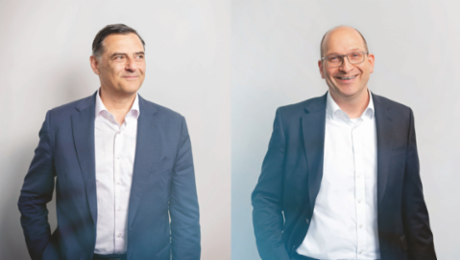Network operators are currently rolling out 5G networks at full speed, which is enabling them to introduce a large number of new applications in the process—not least in the automotive sector, as demonstrated by the development of intelligent and connected vehicles at Porsche Engineering’s Nardò Technical Center. But research institutions and companies are thinking even further ahead and have already started the race to develop the next generation of mobile communications. Toward the end of the decade, the new 6G standard is expected to deliver even higher data rates, lower latency, and improved reliability, among other things. “There is intense activity in this area in the US, China and Europe,” reports Andreas Müller, head of all 6G projects at Bosch.
“It has been understood in all regions of the world that next-generation mobile communications is an issue of strategic importance.” Researchers do, however, still have a lot of ground to cover before 6G can make its way into the everyday lives of private and commercial users, as future 6G networks will require a significant shift in the boundaries of what is technically feasible. For example, developers have discovered the third dimension to ensure uninterrupted data exchange worldwide. “Until now, mobile communications have primarily been limited to the earth’s surface,” says Bernhard Niemann, Head of the Broadband and Broadcast Department at the Fraunhofer Institute for Integrated Circuits IIS. “With 6G, on the other hand, satellites will for the first time be integrated into the network right from the start.”
Handover from satellite to satellite
The satellites could be stationary ones in geostationary orbit (GEO) at an altitude of 36,000 kilometers, or their lower-orbiting counterparts, for example in low Earth orbit (LEO), which is 200 to 2,000 kilometers above the Earth’s surface. Even balloons could be used as high-altitude platforms for 6G base stations at altitudes of 15 to 20 kilometers. At higher frequencies of 10 GHz or more, the antennas of the 6G devices must point in the direction of the satellites or balloons. LEO satellites present an additional challenge: Because they move rapidly across the sky, the connection must be regularly handed off from one satellite to the next—without the user noticing. The performance of 6G is also expected to be enhanced with the aid of artificial intelligence (AI).
“With 6G, satellites will for the first time be integrated into the network right from the start.” Bernhard Niemann, Head of the Broadband and Broadcast Department, Fraunhofer IIS
AI algorithms could, for example, give mobile networks the flexibility to adapt to current conditions and thereby optimize their operation. “Machine learning can be used to identify typical usage over the course of a day,” explains Fraunhofer researcher Niemann. “This information could be used to operate 6G networks with a minimum of energy input.” Bosch expert Müller can also imagine basic AI-supported services that the mobile network makes available to its users: “It would be conceivable for the 6G network to offer services such as object classification in video recordings.” Müller even believes it is possible that data transmission will no longer be standardized the conventional way by precisely specifying the manner in which a signal is generated, and that the neural networks on the transmitter and receiver ends will instead be left to select the best method in each case under the current circumstances. Rohde & Schwarz and chip manufacturer NVIDIA have already taken the first steps toward AI-supported hardware: In February, they unveiled a neural receiver in which an AI model exhibits a significantly better performance than a powerful standard algorithm. “This method can also be integrated into future 6G smartphones,” explains Taro Eichler, technology manager for wireless communication and photonics at Rohde & Schwarz.
Advancing into the terahertz range
Many innovations are also needed to attain the planned high data rates: “Up to one terabit per second should be possible in the future,” as Niemann says. “To do that, you have to tap into higher frequency ranges, because that’s the only place where the necessary bandwidths for fast data transmission are available.” The plan is therefore to use frequencies in the sub-terahertz range between 90 and 300 gigahertz and, potentially, ones in the terahertz range above 300 gigahertz as well. By comparison: 4G operates below six gigahertz, and while 5G theoretically provides for data transmission at up to 71 gigahertz, it is currently seldom used for mobile broadband services. Frequencies in the triple-digit gigahertz range offer a lot of bandwidth, but the physics there makes life difficult for 6G developers.
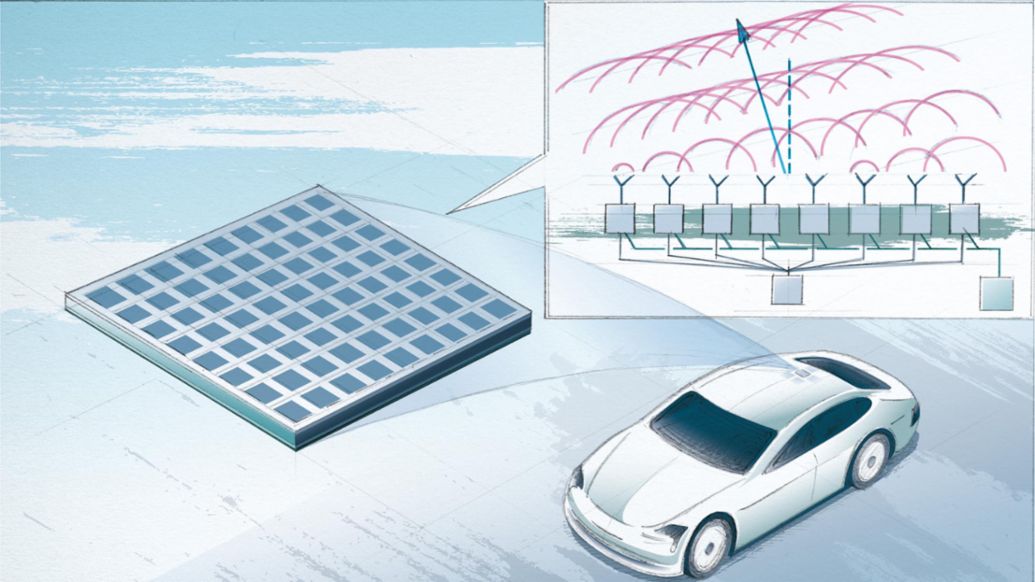
Radio waves rapidly lose their energy in the air and therefore only travel a few meters. To increase the range, researchers are relying on ‘Massive MIMO’ (massive multiple-input multiple-output): Hundreds of tiny antennas are interconnected and software is used to align the wireless beam between the transmitter and receiver. “This beamforming process using 512 or 1,024 antennas, for example, makes it possible to significantly increase the range of radio waves even at such high frequencies,” explains Prof. Ivan Ndip, who heads the RF & Smart Sensor Systems Department at the Fraunhofer Institute for Reliability and Microintegration. “Beamforming enables high mobility and flexibility in communication, but also increases hardware complexity, as numerous transceiver channels are required. It also increases energy consumption and costs. For point-to-point communications, lens antennas offer an alternative solution. They can enable ranges of up to several hundred meters at 6G frequencies above 100 GHz.
To ensure a cost-effective and energy-efficient 6G solution, the transceiver architecture, antenna configurations, and the number of antennas should therefore be determined according to the application.” Another method of increasing the range is also expected to be used for the first time in 6G: Reconfigurable smart surfaces. “Until now, the propagation characteristics and channel for the radio waves have been considered immutable, predetermined by the walls inside buildings, for example,” Eichler explains. “In the future, however, the signals could be reflected off surfaces in order to guide them in a specific direction and thereby achieve better coverage. That’s a completely new approach.”
Reconfigurable smart surfaces are flat structures with integrated electronic circuits, for example special diodes or liquid crystal structures combined with tiny antenna elements. They can be programmed to redirect the incoming radio waves in a targeted way and thus reroute them precisely to the intended receiver. The advantage of the new technology: It is said to be significantly more energy-efficient and less expensive than classic radio repeaters, each of which contains a complete transmitter and receiver.
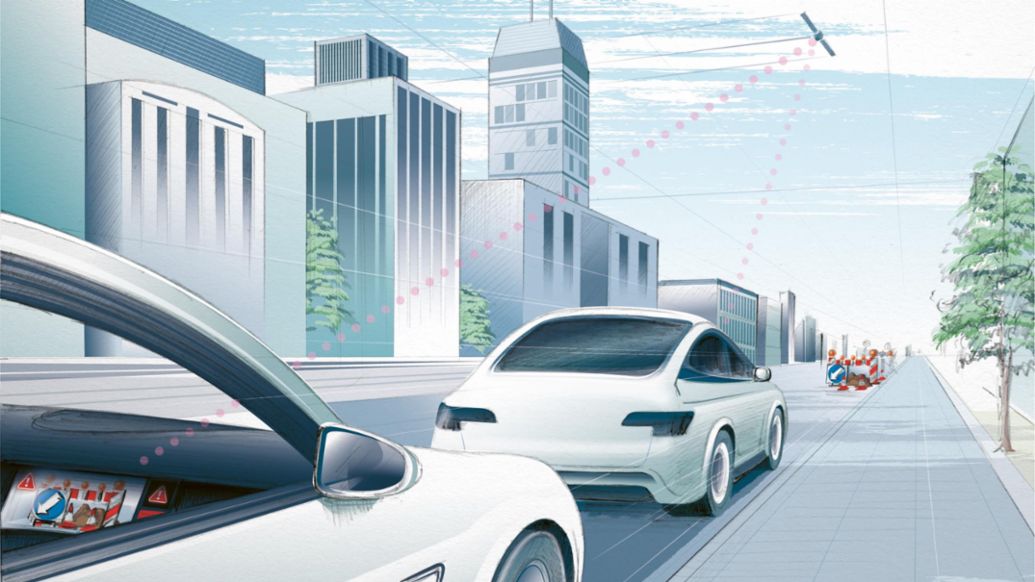
However, a great deal of research is still needed in this area. Designers of high-frequency chips and systems are also facing major challenges. On the one hand, they have to use special semiconductors such as silicon-germanium or gallium nitride at frequencies in the high gigahertz range; on the other hand, the integration of all components into one system also plays a key role. “You have to rethink everything here,” Ndip said. “It’s very difficult to get the energy from the transmitter to the antenna with as little loss as possible and at the same time dissipate the heat from the chips.”
Again, new materials, together with assembly and connection technology, are the key to success: Substrates made of polymers, glasses or ceramics could be the basis for integrated of 6G chip and antenna packages. In addition to high data rates, the use of high frequencies opens up another new possibility: the fusion of communication and environment detection. In the future, 6G radio waves could also be used to detect nearby objects, surfaces, and motion using reflected radiation, as in radar technology.
“Vehicles could use 6G to exchange data with each other, for example, and at the same time pick up the resulting reflections to get an idea of their surroundings,” explains Bosch expert Müller. “While communication and radar are still completely separate today, in a few years we could use the same frequencies, chips and antennas for both.” In the 6G-ICAS4Mobility research project, Bosch is working with partners to more closely integrate what are currently separate communications and radar systems into a single 6G system. To this end, real-time sensor data from various mobile vehicles will be coordinated and combined via 6G technology to provide a more accurate picture of the vehicle’s surroundings.
The goal is to increase road safety and efficiency. Expert Ndip also sees many potential 6G applications in the automotive sector, such as autonomous driving: “An autonomous vehicle needs to be able to communicate its position to other road users in real time, measure distances precisely, and get a 360° view of its surroundings at the same time.” Also needed, he said, are downloads of large volumes of data, such as high-resolution city maps, video images from other vehicles, and high-definition movies for entertainment while driving.
“Beamforming using 512 or 1,024 antennas makes it possible to significantly increase the range of radio waves, even at high frequencies.” Prof. Ivan Ndip, Head of the RF & Smart Sensor Systems Department at Fraunhofer IZM
Thanks to the high 6G data rates, this would not be a problem—4K videos or extensive map updates, for example, could be downloaded to the vehicle in a short time via a base station at an intersection or gas station. Fraunhofer researcher Niemann calls this process a data shower. In addition to the automotive sector, 6G is also expected to enable new applications in fields such as industrial manufacturing, telemedicine and robotics. Government support for this versatile technology is correspondingly high: In Germany alone, the Research Ministry is funding the mobile communications technology of the future with around 700 million euros until 2025. “5G was a bit neglected in this country,” says Eichler.
“In order to be technologically self-sufficient, not least in view of the current geopolitical situation, long-term we want to become more independent with 6G and build our own wireless ecosystem in Germany or Europe.” Four ‘6G hubs’ made up of universities and research institutes, among other measures, each receiving funding of 70 million euros for three years, will be part of this effort. There have also been roughly 20 industrial projects supported by the Research Ministry and launched in collaboration with various partners from the 6G hubs.
No end to development in sight
The first iterations of 6G networks could be in operation by the end of the decade, but probably still with a reduced range of functions. After 2030, all new functions should then be introduced gradually. But even then, Fraunhofer expert Niemann says, 6G will not be the end of the road for mobile technology. “I’m sure that something new will come along again in the future,” he says. “Just as AI is making its way into mobile communications for the first time today, quantum-based processes and algorithms could play an important role in the next generation, for example for encryption.”
He also believes the use of blockchain is possible to secure transactions and create trust. It could be used, for example, to log messages between vehicles in a tamper-proof manner. “Every data exchange in vehicle-2-vehicle communication— notification of an obstacle on the roadway, for example—would be stored in the blockchain,” Niemann says. “Even these few examples show: 7G will incorporate new trends and enable innovative services that are still unimaginable today.”
Summary
Researchers and companies are already working on the next wireless standard, 6G. It is expected to be available around 2030 and will enable new applications in addition to performance improvements. For example, the same frequencies can be used for communications and radar, enabling data exchange and environment detection to be performed simultaneously. The basis for the new 6G applications is advanced semiconductors and smart antenna arrays for beamforming.
Info
Text erstmals erschienen im Porsche Engineering Magazin, Ausgabe 2/2023.
Text: Christian Buck
Illustrationen: Andrew Timmins
Copyright: Alle in diesem Artikel veröffentlichten Bilder, Videos und Audio-Dateien unterliegen dem Copyright. Eine Reproduktion oder Wiedergabe des Ganzen oder von Teilen ist ohne die schriftliche Genehmigung der Dr. Ing. h.c. F. Porsche AG nicht gestattet. Bitte kontaktieren Sie newsroom@porsche.com für weitere Informationen.
